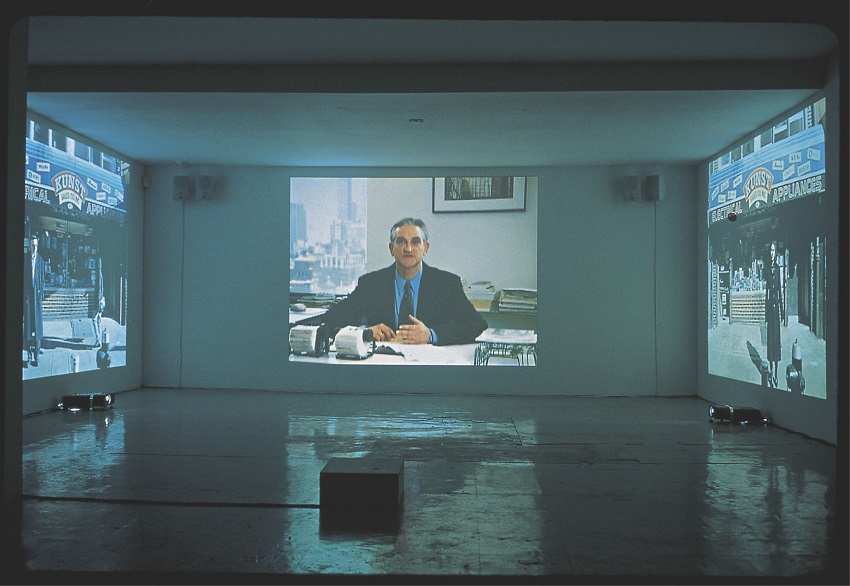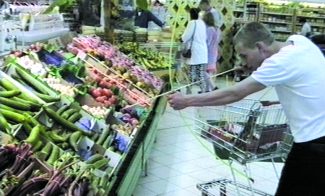In his work, Christian Jankowski (Born 1968 in Göttingen, Germany) often invites the participation of others—from theologians, children, psychoanalysts, talk-show hosts, and art professionals to passing strangers—overturning notions of artistic “control” to open us to questions about the nature of contemporary art and its relation to other forms of social expression and connection. With video and film works produced through such expressive venues as televangelism, traditional documentary, therapy sessions, Hollywood special effects, karaoke recordings, and magic, Jankowski reveals the construction of belief required by each, with a winking humor that lets us laugh with him.
Point of Sale exemplifies the primary strategies of Jankowski’s practice: collaboration, crossover, chance, and critical wit. In the video, he has spliced together interview and video footage of three New York professionals in their workplaces to form a synchronized three-part exchange. Appearing on three separate channels are uptown management consultant Clayton Press; veteran electronics dealer George Kunstlinger (in his Chinatown shop, Kunst Sales, Inc.); and Jankowski’s art dealer Michele Maccarone (whose new gallery, maccarone inc., opened upstairs from Kunst Sales). Interviewing both Kunstlinger and Maccarone, Press questions, consults, and advises these neighbors on their respective clienteles, financial challenges, and business strategies. Meanwhile, Jankowski has arranged for the interviewees to deliver each other’s answers, effectively spotlighting the shared risks, challenges, and goals of their highly specialized ventures. As Jankowski’s first project for a commercial gallery in New York, Point of Sale plays on the overlapping location and vocation of two small businesses (their “point” of sale) while probing the wider intersection between art and commerce—and Jankowski’s own place in it.

